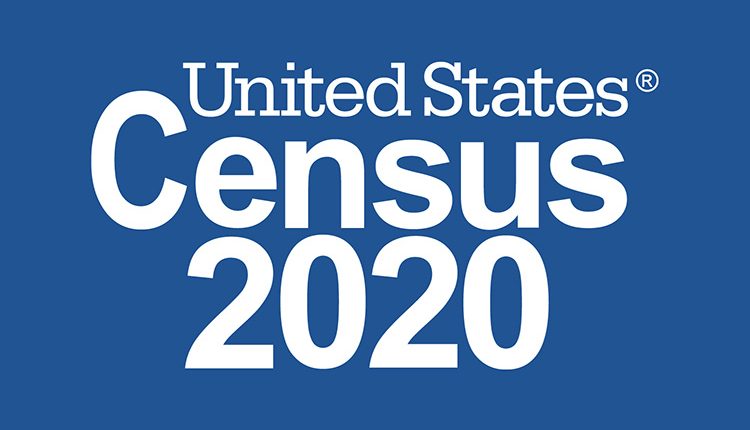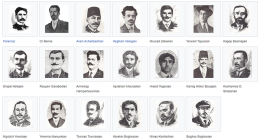By Mark Hedin
Ethnic Media Services
We’ve had years of worry about the confidentiality of people’s census responses, what purposes those responses would be used for, plus the possibility – now abandoned – of being asked about citizenship status. With the 2020 census now officially under way, here’s a look at what those census questionnaires will actually ask us.
There are nine questions on the primary census form. The first asks how many people live in the household. For each of those people, there’s a seven-question second form. Here are all the questions, starting with the nine asked of every household:
“How many people were living or staying in this house, apartment, or mobile home on April 1, 2020?”
“Were there any additional people staying here on April 1 that you did not include in Question 1?”
This question offers five possible responses, in the form of checkboxes, to describe such additional people as children, relatives, live-in babysitters, guests or, in the fifth check-box, “no additional people.”
“Is this house, apartment or mobile home –”
Here, the check-boxes offer four ways to complete the sentence, ranging from “owned by a resident via a mortgage or a loan,” to owned outright, rented or occupied rent-free.
“What is your telephone number?”
The questionnaire states that you would only be contacted “if needed for official Census Bureau business.”
The fifth question is specifically directed to the person who pays the rent or owns the residence, and it asks for that person’s first and last names and middle initial. From then on, this person is referred to as “Person 1.”
“What is Person 1’s sex?”
There are two choices given: male and female.
Question 7 asks for Person 1’s age and date of birth.
Question 8 asks if Person 1 is of “Hispanic, Latino, or Spanish origin?”
The question offers five check-boxes for responding. The first is “No.” The second is Mexican, Mexican-American or Chicano. The third is Puerto Rican, the fourth is Cuban and the fifth “Yes, another Hispanic, Latino, or Spanish origin.” This option is followed by space to write in a more specific description, such as “Salvadoran, Dominican, Colombian, Guatemalan, Spaniard, Ecuadorian, etc.”
The instructions for this question say, “for this census, Hispanic origins are not races,” and ask respondents, after answering this question, to continue to the next and final question.
“What is Person 1’s race?”
Here, respondents have 15 check-boxes to choose from, along with five places where they can write in a specific origin.
For instance, after the first check-box, for “white,” respondents are asked to write whether they are, “for example, German, Irish, English, Italian, Lebanese, Egyptian, etc.”
The next check-box, for “Black of African Am.” also has a write-in line. Its examples of possible responses are: “African American, Jamaican, Haitian, Nigerian, Somali, etc.”
The third check box is for American Indian or Alaska Native and asks respondents here to print the name of “enrolled or principle tribe(s)” and gives as examples “Navajo Nation, Blackfeet Tribe, Mayan, Aztec, Native Village of Barrow Inupiat Traditional Government, Nome Eskimo community, etc.”
After this are 11 more check boxes, for “Chinese, Filipino, Asian Indian, Other Asian, Vietnamese, Korean, Japanese, Native Hawaiian, Samoan, Chamorro, Other Pacific Islander.”
Beneath is a space in which to “Print, for example, Pakistani, Cambodian, Hmong, etc.” if you’ve checked the box for “Other Asian.” Or, if you’ve checked the “Other Pacific Islander” box, to specify “for example, Tongan, Fijian, Marshallese, etc.”
Finally, there’s one more check box, for “Some other race,” with space to write in a specific “race or origin.”
For those households with more than one person, there is a separate, seven-question form for each additional household member. Most of these questions are the same ones Person 1 will have answered, described above, starting with name.
But Question 2, instead of asking if anyone else lives in the household, inquires if “Person 2” usually lives or stays somewhere else. There are nine possible responses offered here, from “no” to eight “yes” options: at college, in the military, for work, in a nursing home, with a relative, at a second or seasonal residence, incarcerated or “for another reason.”
Question 3 asks how Person 2 is related to Person 1. It offers 16 possibilities, from spouse or partner, with separate boxes for same-sex spouses or partners, to a variety of family relationships, such as son/daughter, adopted son/daughter, stepson/daughter, sibling, parent, grandchild, parent- son- or daughter-in-law, “other relative,” roommate, foster child or “other non-relative.”
The remaining four questions are the same as the last four posed to Person 1 about gender, age/birthday, Hispanic/Latino/Spanish origin and ethnicity.
Governments and community organizations are spending hundreds of millions of dollars to collect this information this year, and trillions of tax dollars will be distributed over the next decade based on what this data reveals about how many people live where and what their needs are.
And that’s not all – census data determines how many members of congress each state gets and how many electoral college votes. Businesses rely on census data, too, to decide where to invest. The list goes on and on.
Census data that identifies you personally is protected by the government’s most strict confidentiality rules — it’s kept sealed for 72 years.











2 comments
It is interesting that the original representation in Congress reason for the Census is number 2, almost as a footnote to the trillions of tax dollars to be tossed about, sort of like candy from a politicians float in the Fourth of July parade. That’s very telling, indeed.
The only information mandated by the Constitution to be collected is the number of citizens in each state and where they are domiciled. This is for the determination of how many representatives each state will have and how districts will be drawn in each state.
The other purpose is for the apportionment of direct taxes.
The Congress has power to enact laws to implement the above and for other questions.